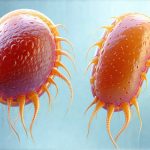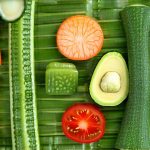Our understanding of gut health has undergone a revolution in recent years, shifting from a somewhat obscure corner of nutritional science to a central pillar of overall well-being. For decades, the focus was largely on probiotics – the live microorganisms we ingest to colonize our gut. However, increasingly, the spotlight is turning towards prebiotics — the food for those beneficial bacteria. While probiotic supplements have their place, true long-term gut health isn’t just about adding new microbes; it’s about nourishing the ones already living within us, and that’s where prebiotics come in. Many people are aware of common prebiotic sources like onions and garlic, but a vast landscape of lesser-known prebiotic fibers exists, offering potent benefits that remain largely untapped in typical Western diets.
The modern diet, characterized by processed foods, low fiber intake, and overuse of antibiotics, has significantly depleted the diversity and abundance of our gut microbiome. This depletion isn’t just about digestive issues; it impacts everything from immune function to mental health, even skin conditions. Restoring a healthy microbiome requires more than simply taking probiotics. It demands a consistent supply of diverse prebiotic fibers that different bacterial species can thrive on, promoting a balanced and resilient ecosystem within the gut. Focusing on these underappreciated fibers is one of the most impactful things we can do for our overall health, and it’s often surprisingly achievable with some mindful dietary choices. Understanding the effects of antibiotics is also key to preserving a healthy gut flora.
The Spectrum of Prebiotic Fibers Beyond Inulin & FOS
Inulin and fructooligosaccharides (FOS) are probably the most well-known prebiotics, found in foods like onions, garlic, leeks, asparagus, and bananas. They’re effective, but represent just a small fraction of the prebiotic fiber universe. Many other fibers offer unique benefits, targeting different bacterial species and providing a broader spectrum of nourishment for the gut microbiome. Resistant starch, for example, is a fascinating prebiotic that isn’t digested in the small intestine, instead reaching the colon where it’s fermented by bacteria. It exists in several forms:
- Naturally occurring resistant starch found in cooked and cooled potatoes, green bananas, and legumes.
- Retrograded resistant starch, created when certain starchy foods are cooked then cooled (think rice or pasta).
- Chemically modified resistant starch, often used as a food ingredient but less common in whole-food diets.
Another important category is galacto-oligosaccharides (GOS), found naturally in legumes, and beta-glucans, abundant in oats and barley. These fibers are metabolized by different bacterial populations than inulin, contributing to greater microbiome diversity. Pectin, prevalent in apples, citrus fruits, and carrots, is also a powerful prebiotic, particularly for Akkermansia muciniphila, a bacterium linked to improved metabolic health and gut barrier function. The key takeaway here isn’t about finding the “best” prebiotic fiber; it’s about incorporating a variety of them into your diet to support a more robust and resilient microbiome. You can learn how stool tests can help you understand your microbiome better.
The impact of diverse prebiotic consumption extends beyond simply feeding bacteria. Different fibers produce different postbiotics—the metabolic byproducts created during fermentation in the gut. These postbiotics, such as short-chain fatty acids (SCFAs), have profound health benefits themselves, influencing inflammation, immune function, and even brain health. A diet rich in varied prebiotic fibers therefore provides both microbial nourishment and a wealth of beneficial compounds that support overall well-being.
How Prebiotic Fibers Impact Gut Health & Beyond
The gut microbiome is often called the “second brain” due to its intricate connection with the central nervous system via the gut-brain axis. Prebiotic fiber consumption plays a crucial role in strengthening this communication pathway and influencing both physical and mental health. The fermentation of prebiotic fibers by gut bacteria produces SCFAs, particularly butyrate, propionate, and acetate. Butyrate is a primary energy source for colon cells, helping to maintain gut barrier integrity and reducing inflammation.
Propionate impacts glucose metabolism and may help regulate appetite, while acetate influences brain function and immune responses. These SCFAs aren’t just localized in the gut; they enter the bloodstream and exert systemic effects throughout the body. Moreover, a healthy microbiome supported by prebiotic fibers enhances nutrient absorption, strengthens the immune system (approximately 70-80% of which resides in the gut), and even influences mood and cognitive function. Individuals with low fiber intake often exhibit reduced microbial diversity and SCFAs production, leading to increased inflammation, impaired immunity, and potentially contributing to chronic diseases. Gut infections can also severely impact these processes.
The benefits extend beyond these core functions. Emerging research suggests a strong link between prebiotic fiber consumption, microbiome composition, and mental health conditions like anxiety and depression. Specific fibers can promote the growth of bacteria that produce neurotransmitters like serotonin and dopamine, influencing mood regulation. Furthermore, a healthier gut barrier reduces “leaky gut” – a condition where undigested food particles and toxins enter the bloodstream, triggering inflammation and potentially contributing to autoimmune responses. Essentially, prebiotic fibers aren’t just about digestive health; they’re about supporting a holistic state of wellness by nurturing the intricate ecosystem within our guts. Gut acidity can also play a role in nutrient absorption.
Boosting Your Prebiotic Intake: Practical Strategies
Incorporating more prebiotic fibers into your diet doesn’t require drastic changes or restrictive diets. It’s about making mindful choices and gradually increasing fiber intake to avoid digestive discomfort. Here are some practical strategies:
- Start slowly: Rapidly increasing fiber intake can lead to bloating, gas, and abdominal pain. Begin with small amounts and gradually increase over time as your gut microbiome adapts.
- Diversify your sources: Don’t rely solely on inulin-rich foods. Explore a wide range of prebiotic-rich options.
- Focus on whole foods: Prioritize whole, unprocessed foods over fiber supplements whenever possible. Whole foods offer additional nutrients and benefits beyond just the prebiotic fiber content.
One effective method is to incorporate a serving of resistant starch into your diet daily – for example, enjoying a cooled potato salad or adding a tablespoon of green banana flour to smoothies. Legumes like lentils and chickpeas are excellent sources of GOS and should be included regularly in meals. Oats and barley provide beta-glucans and can be enjoyed as porridge, added to baked goods, or used as a side dish. Finally, don’t underestimate the power of fruits! Apples, pears, and citrus fruits all contain pectin, offering a delicious way to boost prebiotic intake.
Understanding Fiber & Fermentation: A Delicate Balance
Fermentation is central to the benefits of prebiotics, but it’s also important to understand that everyone responds differently to fiber consumption. Individuals with certain digestive conditions like irritable bowel syndrome (IBS) may need to be more cautious and selective about which fibers they consume, as some can exacerbate symptoms. Low-FODMAP diets, for example, restrict certain fermentable carbohydrates including inulin and FOS, offering relief for IBS sufferers.
It’s also important to note that the gut microbiome is highly individualized. What works well for one person may not work for another. Factors like genetics, diet history, medication use (especially antibiotics), and stress levels all influence the composition of your microbiome and how it responds to different fibers. Paying attention to your body’s signals – bloating, gas, bowel movements – can help you identify which fibers are well-tolerated and which may need to be limited.
Beyond Diet: Lifestyle Factors & Gut Health
While diet is paramount, other lifestyle factors significantly impact gut health and the effectiveness of prebiotic fiber consumption. Stress management is crucial, as chronic stress negatively impacts the microbiome and can impair digestion. Regular exercise promotes gut motility and microbial diversity. Adequate sleep is also essential, as sleep deprivation disrupts the gut-brain axis and alters microbiome composition.
Furthermore, minimizing antibiotic use (unless absolutely necessary) helps preserve the beneficial bacteria in your gut. When antibiotics are unavoidable, consider incorporating probiotic-rich foods or supplements after treatment to help restore the microbiome. Antibiotics effects can be significant and long lasting. Finally, staying hydrated supports healthy digestion and fiber fermentation. Ultimately, a holistic approach that encompasses diet, lifestyle, and mindful self-awareness is key to cultivating a thriving gut microbiome and reaping the numerous health benefits of prebiotic fibers. Skin issues can often be linked back to gut health too.


















